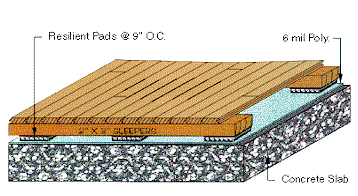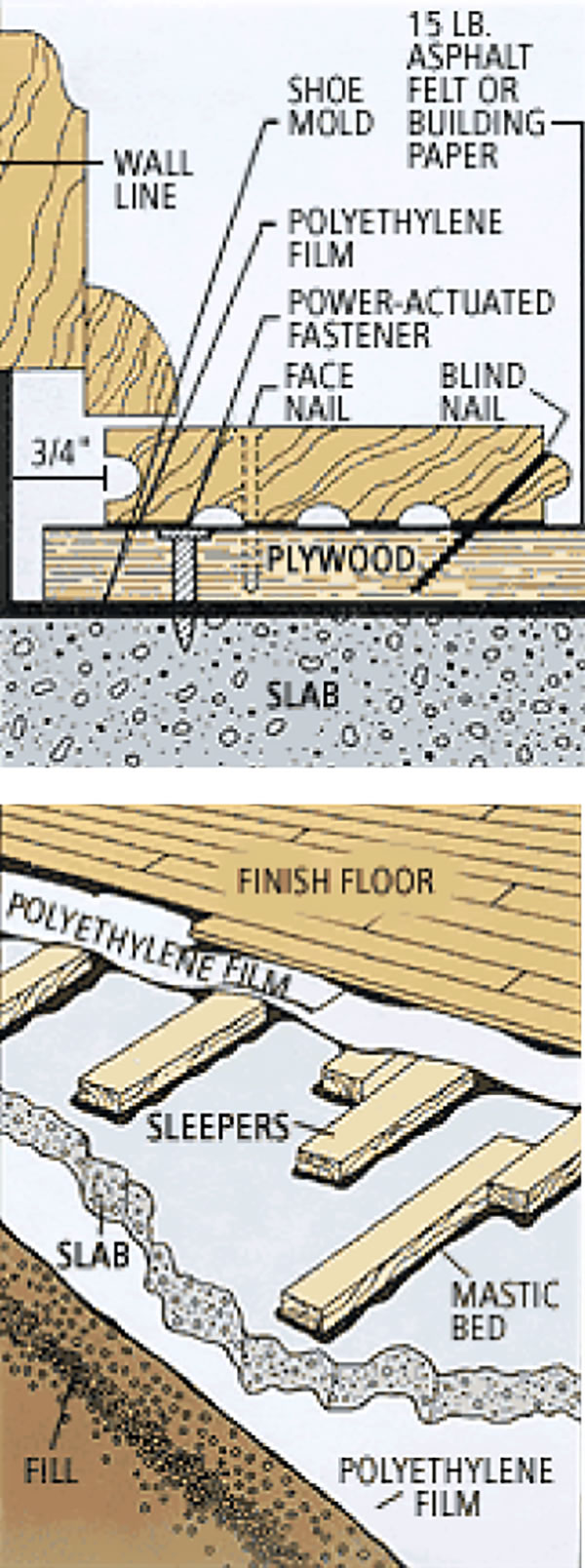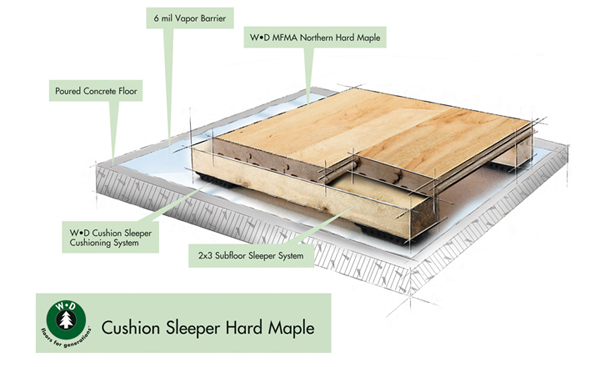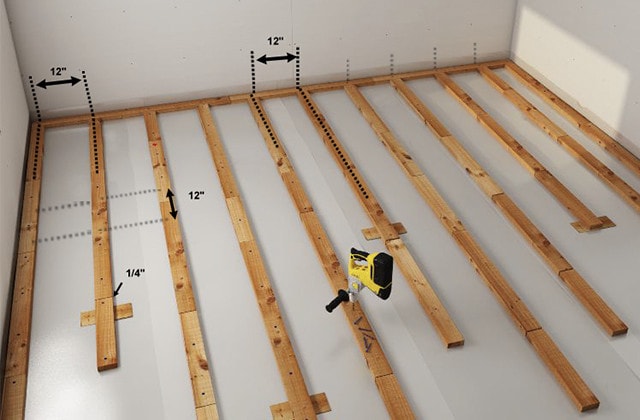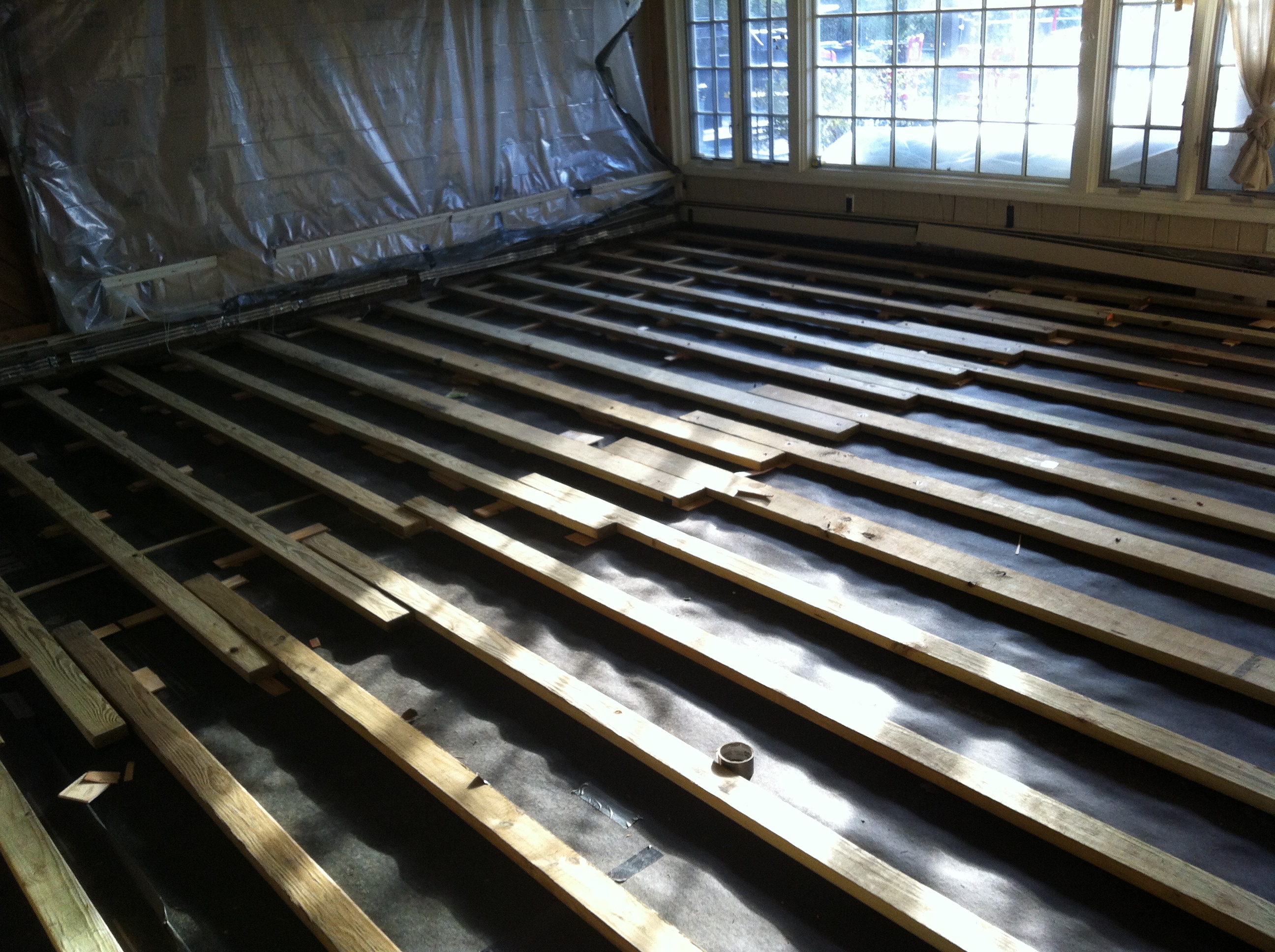What are Wood Floor Sleepers? A Comprehensive Guide
Wood floor sleepers are an essential component in many construction projects, particularly when it comes to installing a new floor over an existing concrete or uneven surface. This article aims to provide a comprehensive guide to wood floor sleepers, covering their definition, types, and applications.
- Definition and Purpose of Wood Floor Sleepers: Wood floor sleepers are horizontal supports made of wood, typically pressure-treated lumber, that are installed directly on top of a subfloor or concrete slab. They create a level and stable surface for the installation of a new floor, such as hardwood, laminate, or engineered wood. Sleepers can also be used to create space for insulation or soundproofing purposes.
- Types of Wood Floor Sleepers: There are several types of wood floor sleepers available, each with its own unique characteristics. Common options include pressure-treated lumber, cedar, redwood, and composite sleepers. Pressure-treated lumber is the most popular choice due to its durability and resistance to moisture, rot, and insects. Cedar and redwood sleepers offer natural resistance to decay and are often chosen for their aesthetic appeal. Composite sleepers are made from a blend of wood fibers and recycled plastic, offering a durable and low-maintenance alternative.
- Applications of Wood Floor Sleepers: Wood floor sleepers find wide applications in various construction projects. They are commonly used in basements, where moisture levels are higher, to create a moisture barrier between the concrete slab and the new flooring. Sleepers are also used in outdoor applications, such as decks and patios, to elevate the flooring and provide better drainage. Additionally, they are utilized in renovation projects to level uneven floors and provide a solid foundation for the new flooring.
- Advantages of Using Wood Floor Sleepers: Using wood floor sleepers in construction projects offers numerous benefits. Firstly, sleepers provide a stable and level surface, ensuring the longevity and performance of the new flooring. They also create an effective moisture barrier, preventing moisture-related issues such as mold and mildew growth. Additionally, sleepers allow for proper insulation, enhancing energy efficiency and comfort. Moreover, wood sleepers can be easily customized and adjusted to accommodate various flooring types, making them highly versatile.
- Considerations and Precautions: While wood floor sleepers offer many advantages, it is important to consider a few factors before installation. Firstly, ensure that the sleepers are properly treated for moisture resistance, especially in areas with high humidity or moisture levels. It is also crucial to leave adequate space between sleepers for ventilation and drainage. Moreover, proper insulation and vapor barriers should be installed to prevent condensation. Lastly, consult professional guidelines and local building codes to ensure compliance and safety.
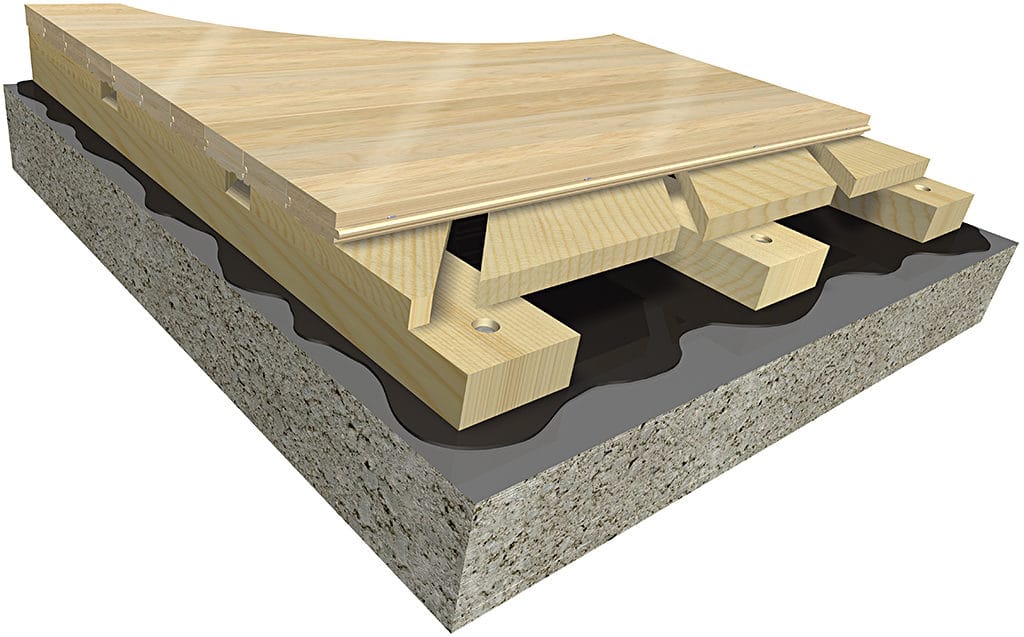
Benefits of Using Wood Floor Sleepers in Construction Projects
Wood floor sleepers are a popular choice in construction projects for their numerous benefits. Let’s discuss the advantages of using wood floor sleepers, highlighting their impact on stability, moisture resistance, insulation, versatility, and customization.
Stability and Leveling: One of the primary benefits of using wood floor sleepers is their ability to create a stable and level surface for the installation of new flooring. Sleepers provide a solid foundation, ensuring that the flooring remains even and free from any dips or unevenness. This stability is especially crucial when installing flooring over an existing concrete slab or uneven surface.
Moisture Resistance: Wood floor sleepers, particularly those made from pressure-treated lumber, offer excellent moisture resistance. They act as a barrier between the concrete slab and the new flooring, preventing moisture seepage and potential damage to the flooring material. This is particularly important in areas with high humidity or moisture levels, such as basements or outdoor decks.
Insulation Benefits: In addition to providing stability, wood floor sleepers can also contribute to the insulation of the floor. By creating a gap between the existing surface and the new flooring, sleepers allow for the installation of insulation material. This helps improve energy efficiency, reduce heat loss, and provide a more comfortable environment.
Versatility and Customization: Wood floor sleepers offer versatility in terms of the types of flooring that can be installed. They can accommodate various flooring materials such as hardwood, laminate, or engineered wood. Sleepers can also be adjusted and customized to fit specific project requirements, allowing for flexibility and adaptability in construction projects.
Ease of Installation and Accessibility: Another advantage of wood floor sleepers is their ease of installation. They can be easily cut, adjusted, and secured in place, making the installation process relatively straightforward. Additionally, using sleepers provides accessibility to underlying utilities, such as electrical wiring or plumbing, as they create a gap between the existing surface and the new flooring.
How to Properly Install Wood Floor Sleepers for Optimal Results
Proper installation of wood floor sleepers is crucial to ensure optimal results and longevity of the flooring. Follow this step-by-step guide on how to install wood floor sleepers correctly, covering preparation, layout, securing, and leveling.
Preparing the Surface: Before installing wood floor sleepers, it is essential to prepare the surface properly. Start by cleaning the existing floor thoroughly, removing any debris, dust, or adhesive residue. Ensure that the surface is level and free from any cracks or bumps that may affect the installation. It is recommended to use a self-leveling compound if necessary to create a smooth and even surface.
Layout and Spacing: Next, plan the layout and spacing of the sleepers. Measure and mark the locations where the sleepers will be placed, ensuring they are evenly spaced and aligned. The spacing between the sleepers will depend on the type of flooring material and the size of the sleepers. Generally, a spacing of 16 to 24 inches apart is recommended.
Securing the Sleepers: Once the layout is determined, secure the sleepers to the existing floor. Start by applying construction adhesive to the bottom side of each sleeper. Place the sleepers on the marked locations, pressing them firmly to ensure a strong bond with the surface. Additionally, use concrete screws or nails to secure the sleepers to the floor, ensuring stability and preventing any movement.
Leveling the Sleepers: After securing the sleepers, check for any unevenness or gaps between them. Use shims or leveling compound to adjust and level the sleepers as needed. It is important to ensure that all sleepers are at the same height to create a level surface for the flooring installation. Use a level tool to check the alignment and make necessary adjustments.
Final Checks: Before proceeding with the flooring installation, double-check the stability and levelness of the sleepers. Walk across the sleepers to ensure they feel secure and do not shift. Additionally, check for any gaps or spaces between the sleepers that need to be filled. It is crucial to address any issues before proceeding to the next step to ensure a successful installation.
Choosing the Right Type of Wood for Your Floor Sleepers
Choosing the right type of wood for your floor sleepers is crucial to ensure their durability, resistance to moisture, and overall performance. Here we highlight the factors to consider when selecting wood for floor sleepers and provides an overview of common options available.
Durability and Resistance: When choosing wood for floor sleepers, it is important to consider its durability and resistance to moisture, rot, and insects. Pressure-treated lumber is a popular choice due to its high resistance to these elements. It is chemically treated to protect against decay and insect infestation, making it suitable for both indoor and outdoor applications. Cedar and redwood are also good options as they naturally possess these properties.
Moisture Considerations: Moisture resistance is a crucial factor to consider, especially in areas with high humidity or moisture levels. Wood species that have natural resistance to moisture, such as cedar and redwood, are ideal choices. Additionally, composite sleepers made from a blend of wood fibers and recycled plastic offer excellent moisture resistance and are a suitable option for environments prone to moisture-related issues.
Strength and Stability: The strength and stability of the wood are important considerations to ensure the longevity of the sleepers. Opt for wood species that have high structural strength and will not warp or twist over time. Pressure-treated lumber and composite sleepers are known for their strength and stability, making them reliable choices for floor sleepers.
Aesthetic Appeal: If aesthetics are a priority, consider the visual appeal of the wood species. Different woods have distinct natural colors, grains, and textures. For a more rustic or natural look, cedar and redwood sleepers are popular choices. Pressure-treated lumber and composite sleepers offer a more uniform and contemporary appearance.
Budget and Availability: Lastly, consider your budget and the availability of the wood species. Pressure-treated lumber is generally more affordable and widely available, making it a popular choice for many construction projects. Cedar and redwood sleepers tend to be more expensive but offer natural beauty and durability. Composite sleepers are often competitively priced and readily available.
Maintenance and Care Tips for Wood Floor Sleepers
Proper maintenance and care are essential to ensure the longevity and durability of wood floor sleepers. Here are some valuable tips and guidelines on how to maintain and care for your wood floor sleepers, covering cleaning, moisture control, protection, and regular inspections.
Regular Cleaning: Regular cleaning is crucial to keep your wood floor sleepers in optimal condition. Sweep or vacuum the surface regularly to remove dirt, dust, and debris that can scratch or damage the wood. Avoid using excessive water during cleaning, as it may seep into the sleepers and cause moisture-related issues. Instead, use a damp cloth or mop to wipe the surface clean.
Moisture Control: Moisture control is vital to prevent damage to the wood sleepers. Avoid excessive exposure to moisture and humidity by ensuring proper ventilation in the area. If there are any signs of moisture accumulation or leaks, address them promptly to prevent moisture-related issues such as mold or rot. Consider using a dehumidifier in areas with high humidity levels.
Protection from Scratches and Dents: Protecting the surface of the sleepers from scratches and dents will help maintain their appearance and performance. Place protective pads or felt under heavy furniture to prevent scratching or denting the wood. Use rugs or mats in high-traffic areas to reduce wear and tear on the sleepers. Additionally, avoid dragging heavy objects across the floor to minimize the risk of damage.
Inspections and Maintenance: Regular inspections are essential to identify any signs of damage or wear. Inspect the sleepers for any cracks, warping, or signs of decay. If any issues are detected, address them promptly to prevent further damage. Additionally, consider applying a protective sealant or coating to the sleepers to enhance their durability and resistance to moisture.
Professional Maintenance: For extensive maintenance or repairs, it is advisable to consult a professional. They can assess the condition of the sleepers, provide necessary repairs, and offer guidance on proper maintenance techniques. Professional maintenance will ensure that your wood floor sleepers remain in optimal condition, extending their lifespan and performance.
Replacing an Old Floor to New Again
Tar and Screed Wood Floor Installation – Hardwood Floors Magazine
Slope your hot room floor with the “Ben Square” sleeper method
Related Posts:
